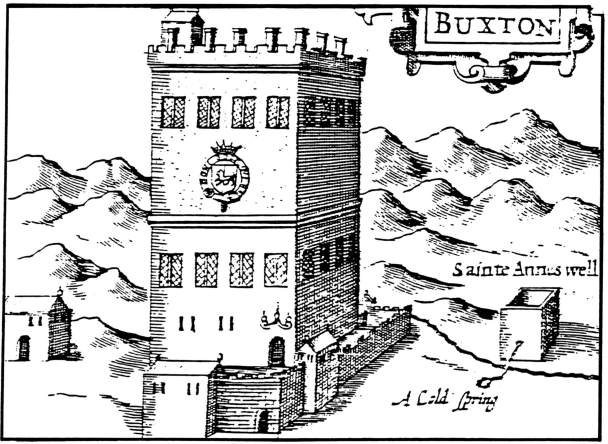
Buxton Local History Society



A Brief History of Buxton.
The first written record of Buxton is in 1100, but much evidence of human occupation prior to then exists. Mesolithic (7600 - 3400 BC) artefacts have been found in excavations of a dwelling site in Lismore Fields which was carbon dated to 5220 BC. Later Neolithic dwelling remains were also found at the site, plus chambered tombs and henge monuments give further evidence of these peoples. Evidence of Bronze Age peoples is in settlements, field systems, stone circles and barrows. Several large earthworks, believed to be forts, are all that show Iron Age activity in the area.
Of Roman occupation there can be little doubt. Artefacts and coins, plus the roads leading to the town, show this, but it must be said that no sound evidence of a fort, or the presumed baths, has been found. The name, "Aquae Arnemetiae", was first recorded in the 7th century "Ravenna Cosmography", a list of all the countries, towns and rivers of the then known world. However, it is by no means certain that it referred to Buxton. The Anglo-Saxons certainly penetrated the Peak District, although probably not until the 7th Century, mainly evidenced by place names and changes to the field systems.
Before the Norman conquest Buxton was probably part of the Ashford estates but after was given to the Peverel family who built their keep near Castleton. Disappointingly, Buxton was not mentioned in the Doomsday survey.
1086. Buxton not mentioned in the Doomsday Book but probably owned by William Peverel
1100. "Buckstone" recorded in the founding charter of Lenton Abbey (Notts), lands given by a later Wm Peverel
1152. Peverel lands forfeited to the Crown and incorporated into the Royal Forrest of Peak
1235. A mill in Ashwood Dale granted to William, son of Daniel
1460. The existence of a Holy Well, with miraculous cures, noted by William Worcester
1489. First noting of a chapel in Buxton
1521. Curative powers of the waters first attributed to St Anne, recorded in the accounts of Sir Henry Willoughby.
1538. The well ordered to be closed by Thomas Cromwell as part of the dissolution of the monasteries
1541. Earl of Shrewsbury began acquisition of land in Buxton, and elsewhere, following his marriage to Bess of Hardwick
1573. Buxton Hall built by the 6th Earl of Shrewsbury
1573. First visit to Buxton by Mary, Queen of Scots to take the waters.
1584. Last visit to Buxton by Mary, Queen of Scots
1631. First known map of Buxton by Charles Cavendish, son of Bess of Hardwick
1647. Buxton school founded and enlarged in 1855.
1659. Buxton created a parish but withdrawn a year later
1670. The Hall rebuilt by the 3rd Earl of Devonshire
1674. The school refounded, with lands to provide an income to pay the schoolmaster
1709. St Anns Well rebuilt by Sir Thomas Delves in thanks for a successful cure
1711. The Shakespeare Inn built to provide accommodation for increasing numbers of visitors
1712. New bath house erected over the existing bath, adjacent to the Hall, by the 2nd Duke of Devonshire
1724. First turnpike road in Derbyshire between Buxton and Manchester. Others soon followed
1760. The Eagle & Child Inn rebuilt by 3rd Duke of Devonshire
1780. 5th Duke of Devonshire begins building the Crescent and Great Stables, completed in 1788
1803. Building of the Square started and completed in 1806
1812. St. John's church built.
1813. Buxton granted a market charter.
1831. Cromford & High Peak Railway opened.
1858. Half of the Great Stables given to the Buxton Bath Charity for use as a hospital
1863. The railways arrive. The Stockport, Disley & Whaley Bridge Railway from the north and the Buxton, Matlock & Midlands Junction Railway from the south, promoted by the London, North Western and Midland railways respectively.
1871. Winter Gardens built and Pavilion Gardens laid out
1876. Great Stables completely given over to the Buxton Bath Charity
1876. Octagon opened, capable of holding 2000 people
1881. The dome added to the Devonshire Hospital to enclose the central courtyard
1894. Pump Room built
1899. Midland Railway line from London via Ashbourne opened
1903. Opera House, designed by Frank Matcham, opened
1934. George V granted the title “Royal” to the Devonshire Hospital
2000. The Royal Devonshire Hospital closed
2005. RDH building reopened as the University of Derby - Buxton Campus, incorporating the former Harpur Hill College
To return to the main "History" page CLICK HERE